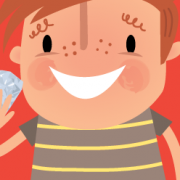Lessons from the geese
Note: This set of five mini-lessons touches on aspects of cooperation already covered in other activities in this lesson. It works well as a framework for a week-long study or as a lesson recap. Before beginning these mini-lessons, watch a flock of geese flying in formation.
This lesson set is based on an article written in 1972 by Dr. Robert McNeish and entitled Lessons From the Geese. Dr. McNeish, who spent many years teaching science, first wrote this object lesson as part of a sermon he presented in his church. It is now used worldwide, both in churches and in the business community, as a helpful illustration of good leadership. Sue Widemark’s research (see Suewidemark.com/lessonsgeese.htm) helped establish the validity of Dr. McNeish’s authorship and the scientific accuracy of his premises.
The facts and principles presented below in italics are quoted from Dr. McNeish’s original article.
Teamwork
Fact: As each goose flaps its wings it creates an “uplift” for the birds that follow. By flying in a V formation, the whole flock adds 71 per cent greater flying range than if each bird flew alone.
Lesson: People who share a common direction and sense a community can get where they are going quicker and easier because they are travelling on the thrust of one another.
Key concept: We accomplish more when we work together cooperatively.
Activity options: Try the “fun with teamwork” exercises in the hands-on options part of this lesson, or listen to the song Lean on Me.
Harmony
Fact: When a goose falls out of formation, it suddenly feels the drag and resistance of flying alone. It quickly moves back into formation to take advantage of the lifting power of the bird in front of it.
Lesson: If we have as much sense as a goose, we stay in formation with those headed where we want to go. We are willing to accept their help and give our help to others.
Key concept: To succeed, everyone needs to work toward the same goal because even one person can make or break the unity of a group effort.
Activity options:
- Play “the power of unity” game from the hands-on options section.
- Read the “harmonious relationships in nature” hands-on option from the harmony lesson.
- Listen to the song We Are One in the Spirit and talk about how sharing God’s love with each other makes a difference in the way we live and work together.
- Read 1 John 4:10-11 and 1 Peter 4:8 and talk about ways that “love covers over sin” when we readily offer each other grace and forgiveness.
Sharing the lead
Fact: When the lead goose tires, it rotates back into the formation and another goose flies to the point position.
Lesson: It pays to take turns doing the hard tasks and sharing leadership. As with geese, people are interdependent on each other’s skills, capabilities and unique arrangements of gifts, talents or resources.
Key concept: “Leading” means using your God-given gifts and talents to serve God and others. Being willing to follow another person’s lead is as important as being willing to take a turn leading.
Activity options:
- Give everyone a chance to both lead and follow by doing the “cooperating in the kitchen” activity described in the hands-on options section of this lesson.
- Read Romans 12:4-8 and / or 1 Peter 4:10-11 and write a song or poem about using the gifts God has given each of you.
- Listen to I Will Follow by Chris Tomlin and talk about ways you can follow and serve Jesus.
Encouragement
Fact: The geese flying in formation honk to encourage those up front to keep up their speed.
Lesson: We need to make sure our honking is encouraging. In groups where there is encouragement, the production is much greater. The power of encouragement is the quality of honking we seek.
Key concept: Saying positive things is like giving others a “turbo boost” of energy. It helps others around us feel strong and productive and helps to keep everyone motivated.
Activity options:
- Do the “garbage busters” activity outlined in the hands-on options section of the courtesy lesson.
- Listen to a song about encouraging others and talk about how we can encourage others through what we say. You Raise Me Up is a good choice.
Faithfulness
Fact: When a goose gets sick, wounded or shot down, two geese drop out of formation and follow it down to help and protect it. They stay with it until it dies or is able to fly again. Then they launch out with another formation or catch up with the flock.
Lesson: If we have as much sense as geese, we will stand by each other in difficult times as well as when we are strong.
Key concept: An important aspect of being part of a group or a family is watching out for the well-being of other group members.
Activity options:
- Read the story about rebuilding the walls of Jerusalem. (See “standing strong together” in the Bible stories section of this lesson.)
- Listen to the song I’ll Stand by You – or another song of your choice on faithfulness – and talk about what it means to “stand by” family members.
- Do the “faithfulness can mean sacrifice” activity found in the hands-on options section of the faithfulness lesson.








